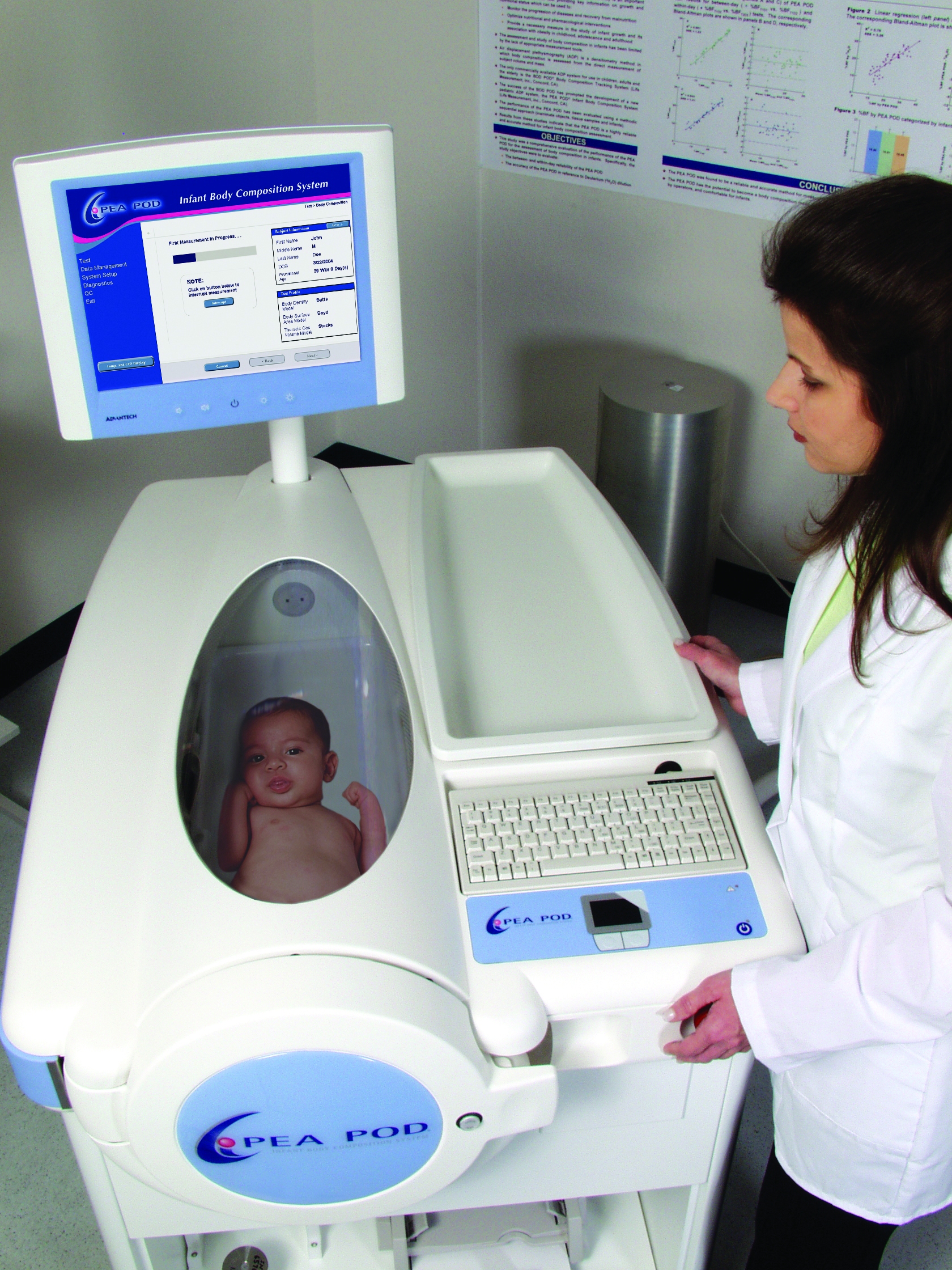Whole-body Air Displacement Plethysmography on:
[Wikipedia]
[Google]
[Amazon]

 Air displacement plethysmography (ADP, also known as whole-body air displacement plethysmography) is a recognized and scientifically validated densitometric method to measure human
Air displacement plethysmography (ADP, also known as whole-body air displacement plethysmography) is a recognized and scientifically validated densitometric method to measure human
BOD POD Manufacturer Page
Airmetrix Manufacturer Page
Self-care Body shape Medical signs Sports nutrition

 Air displacement plethysmography (ADP, also known as whole-body air displacement plethysmography) is a recognized and scientifically validated densitometric method to measure human
Air displacement plethysmography (ADP, also known as whole-body air displacement plethysmography) is a recognized and scientifically validated densitometric method to measure human body composition
In physical fitness, body composition is used to describe the percentages of fat, bone, water, and muscle in human bodies. Because muscular tissue takes up less space in the body than fat tissue, body composition, as well as weight, determines ...
.
ADP is based on the same principles as the gold standard method of hydrostatic weighing
Hydrostatic weighing, also referred to as underwater weighing, hydrostatic body composition analysis and hydrodensitometry, is a technique for measuring the density of a living person's body. It is a direct application of Archimedes' principle, t ...
, but through a densitometric technique that uses air displacement rather than water immersion.
Air-displacement plethysmography offers several advantages over established reference methods, including a quick, comfortable, automated, noninvasive, and safe measurement process, and accommodates various subject types (e.g., children, obese, elderly, and disabled persons).
History
The principles of plethysmography were first applied to the measurement of the body volume and composition of infants in the early 1900s, but it was not until the 1960s that relatively stable measurements were achieved. However, these systems required that ambient conditions be maintained constant. Applications in humans have been limited, in part by technical difficulties in adjusting for irregularities in temperature and humidity of the air next to the skin and the air. Because of inconveniences such as these and various technology difficulties, none of the early air-displacement plethysmographs were ever developed for common, everyday use. Later experimental air-displacement plethysmographs developed in the 1980s were more advanced technologically, but it was only in the mid-1990s, that the first commercially available air-displacement plethysmograph was introduced for adults and early 2000 for infantsHow it works
With air-displacement plethysmography, the volume of an object is measured indirectly by determining the volume of air it displaces inside an enclosed chamber (plethysmograph). Thus, human body volume is measured when a subject sits inside the chamber and displaces a volume of air equal to his or her body volume. Body volume is calculated indirectly by subtracting the volume of air remaining inside the chamber when the subject is inside from the volume of air in the chamber when it is empty. The volume of air inside the chamber is calculated by slightly changing the size of the chamber (e.g. by moving a diaphragm in one of the walls) and applying relevant physical gas laws to determine the total volume from the changing air pressure within the chamber as its size is altered.Boyle's law
Boyle's law, also referred to as the Boyle–Mariotte law, or Mariotte's law (especially in France), is an experimental gas law that describes the relationship between pressure and volume of a confined gas. Boyle's law has been stated as:
The ...
states that at a constant temperature, volume (V) and pressure (P) are inversely related. Therefore, when a constant temperature is maintained (isothermal conditions), Boyle's law can be applied. Consequently, most early plethysmographs required temperature-controlled surroundings and isothermal conditions within the test chamber.
Validations
Air displacement plethysmographs have been validated against main body composition assessment techniques: *Hydrostatic weighing
Hydrostatic weighing, also referred to as underwater weighing, hydrostatic body composition analysis and hydrodensitometry, is a technique for measuring the density of a living person's body. It is a direct application of Archimedes' principle, t ...
*Main Reference Methods
**Hydrostatic weighing
Hydrostatic weighing, also referred to as underwater weighing, hydrostatic body composition analysis and hydrodensitometry, is a technique for measuring the density of a living person's body. It is a direct application of Archimedes' principle, t ...
**Dual-energy X-ray absorptiometry
Dual-energy X-ray absorptiometry (DXA, or DEXA) is a means of measuring bone mineral density (BMD) using spectral imaging. Two X-ray beams, with different energy levels, are aimed at the patient's bones. When soft tissue absorption is subtracted ...
**Measurement of Total Body Water (TBW) by isotope dilution
Isotope dilution analysis is a method of determining the quantity of chemical substances. In its most simple conception, the method of isotope dilution comprises the addition of known amounts of isotopically enriched substance to the analyzed samp ...
**Measurement of total body potassium
Potassium is the chemical element with the symbol K (from Neo-Latin ''kalium'') and atomic number19. Potassium is a silvery-white metal that is soft enough to be cut with a knife with little force. Potassium metal reacts rapidly with atmosphe ...
**Multi-compartment model
A multi-compartment model is a type of mathematical model used for describing the way materials or energies are transmitted among the ''compartments'' of a system. Sometimes, the physical system that we try to model in equations is too complex, so ...
s
*Deuterium
Deuterium (or hydrogen-2, symbol or deuterium, also known as heavy hydrogen) is one of two Stable isotope ratio, stable isotopes of hydrogen (the other being Hydrogen atom, protium, or hydrogen-1). The atomic nucleus, nucleus of a deuterium ato ...
method (in infants)
* Whole body magnetic resonance tomography.{{cite journal , doi=10.1002/jmri.24509 , title=Whole-body MRI-based fat quantification: A comparison to air displacement plethysmography , journal=Journal of Magnetic Resonance Imaging , volume=40 , issue=6 , pages=1437–1444 , year=2014 , last1=Ludwig , first1=Ute A , last2=Klausmann , first2=Florian , last3=Baumann , first3=Sandra , last4=Honal , first4=Matthias , last5=Hövener , first5=Jan-Bernd , last6=König , first6=Daniel , last7=Deibert , first7=Peter , last8=Büchert , first8=Martin, pmid=24449401 , s2cid=28081675
References
External links
BOD POD Manufacturer Page
Airmetrix Manufacturer Page
Self-care Body shape Medical signs Sports nutrition